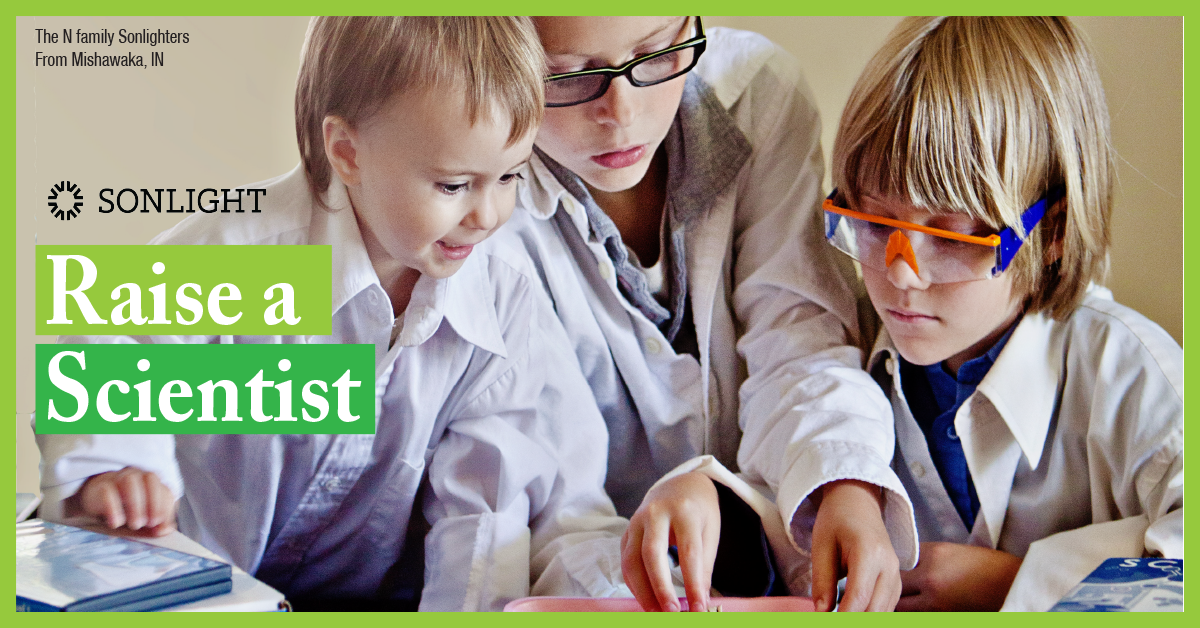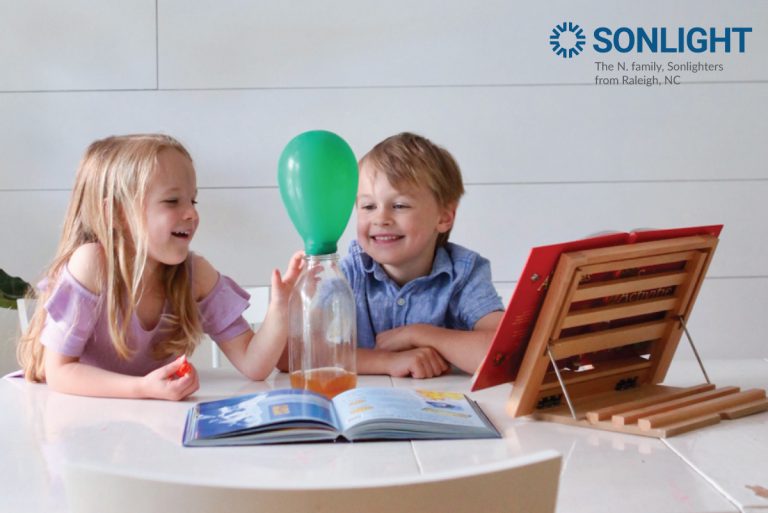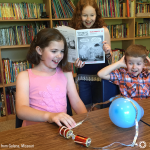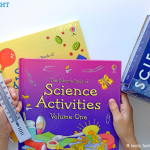When things don’t go quite right, there’s no need to scrap the whole thing. There are always ways to turn a failed experiment into a valuable learning experience.
We all have our own pictures of what the ideal homeschooling day looks like. Mine definitely includes an amazing, mind-blowing science experiment that has all my kids in awe. Bubbling beakers, microscopes, home-made circuits, dry ice vapor, rubber gloves, and goggles—that’s the vision I’m always chasing.
But sometimes, homeschool science doesn't quite go according to plan.
As it turns out, I’m just not a science mom. With a bit of embarrassment, I admit that we’ve had more than our fair share of failed science experiments around here.
The worst part is that I get my kids so excited about the great experiment we’ll be doing. Their eyes light up, and they complete all their other assignments more quickly than usual, just so we can get to science. I set up all the equipment with care. I divvy up each child’s materials onto their own color-coded science trays. The kids come running. I wonder which one will grow up to become a scientist, or lab technician, or cure cancer.
And then we get into it. We follow the instructions and hold our breath and…. NOTHING.
It’s a genuine science fail.
All the hype, all the prep, wasted. It’s now onto Child Disappointment Management. Have you been there? If you have, relax, you’re not alone. Not every homeschool science experiment works out perfectly. When it doesn’t, you’ll need to decide what to do next.
Recovering from a science fail isn’t always easy, but it’s important. On my worst days, when our homeschool plan was barely moving along on a hope and a prayer, I’ve given up. I hand out popsicles and send the kids out to play while I clean up the aftermath of my science fiasco.
However, when things don’t go quite right, there’s no need to scrap the whole thing. There are always ways to turn your busted experiment into a solid learning experience. Don’t call science a failure just yet. Instead, try these rescue ideas.
1. Watch a Video
If your Science program came with a DVD or video resource, like Discover and Do Packages, take a moment to view the video for the experiment. If not, it’s pretty easy to find videos on YouTube for nearly every experiment out there. After watching a video, try the experiment again now that you’ve seen it in action. If it’s still not working for you, see if the video provided enough explanation to be able to complete your Activity Sheets, then give yourself permission to move on.
2. Re-engineer the Experiment
Create an Experiment 2.0 by working together to design a new or altered experiment to test the same or similar hypothesis. Start with your question, create your hypothesis, and begin designing a new experiment that will test your hypothesis.
For example, consider a failed experiment testing static electricity. Begin by discussing and recording what you already know: I often get shocked when I walk across the carpet in my shoes and touch something metal. Next, record a question the kids have about static electricity, like: What types of shoes create the most static electricity? Then, design and carry out a simple experiment to test each child’s guess.
Now that your kids have some experience with the subject, work through your Activity Sheets to bring it all together.
3. Smile! It's Science!
Demonstrate the trial-and-error aspects of the scientific process while staying positive.
Show your kids how to respond well when things don’t go quite right. Explain that science is a process that often requires repeating the same tasks over and over while slightly adjusting one part each time until you can prove your hypothesis.
If you think the experiment may work after some repetition and small changes, challenge your kids to repeat it up to 10 different times. Older kids can make a chart to record which changes were made for each repetition. Include your younger kids in making guesses about which changes might affect the results. Include those random and silly suggestions!
4. Talk About What Happened
Infer, discuss, and record why you think the experiment didn’t work.
Make the failed science experiment the subject of the lesson. After some discussion about why things didn’t go according to plan, have some fun with it. You could print a photo of the results and label it #ScienceFail, adding some arrows pointing to the parts that didn’t work. Add comments about what went wrong and why.
Or, make a funny poster titled “You Had ONE Job.” Draw a picture of the main culprit (the balloon that wouldn’t inflate, the paperclip that wasn’t actually metal, etc.) Then write about the horrible job your materials did in testing your hypothesis and why.
While learning to precisely follow a checklist is an important part of science, equally important is the skill of making inferences about why things happened the way they did.
5. Plan a Do-over
Reschedule the experiment for the following week.
A lighthearted “better luck next time” approach is often the best response to a failed science experiment. Give yourself time to gather better materials if you need them, double-check your Instructor’s Guide, and work through the experiment a few times. Your kids will learn and remember even more by repeating the same experiment and figuring out what changes need to be made.
Try a Science Friday or Science Saturday. With Sonlight’s 4-day schedule, you can move trickier experiments to Friday, or you can plan a science weekend. This gives you a focused day for science that will allow for variances, give you a chance to work through any quirks, and explore the concepts a little more deeply. With the day dedicated to science, you can add more experiments and projects for extra science fun.
6. Let Scientists from History Inspire
Study scientists who had to overcome multiple failures before their big breakthroughs.
There are plenty of scientists and inventors who didn’t succeed during their first attempts. Spend some time researching and studying famous science fails. Which advances in science resulted from mistakes or came from looking into something entirely different? Consider working together to make a big poster with the names and faces of scientists and inventors that didn’t give up after their big failures. Add some great quotes that inspire your kids to never stop trying. Hang it on the wall for inspiration during your next homeschool science experiment!
7. Reach Out for Help
Remember that you’re far from alone in this. Reach out in the Sonlight Connections community and ask for tips for upcoming lessons and experiments. Share pictures of your busted experiments and let others chime in on how to recover them.
When you experience a failed science experiment, you can also call Sonlight for clarification. Advisors are happy to help!
You don’t have to be a Science Mom to give your kids a great foundation in science. Life itself is about the journey, and working through problems is a key part of learning to enjoy it to the fullest. So the next time you have an epic science fail, try some of these ideas to turn it into a life lesson!

Sonlight Science provides a complete solution: books, Activity Sheets, a detailed Instructor's Guide, and supplies for the experiments.








